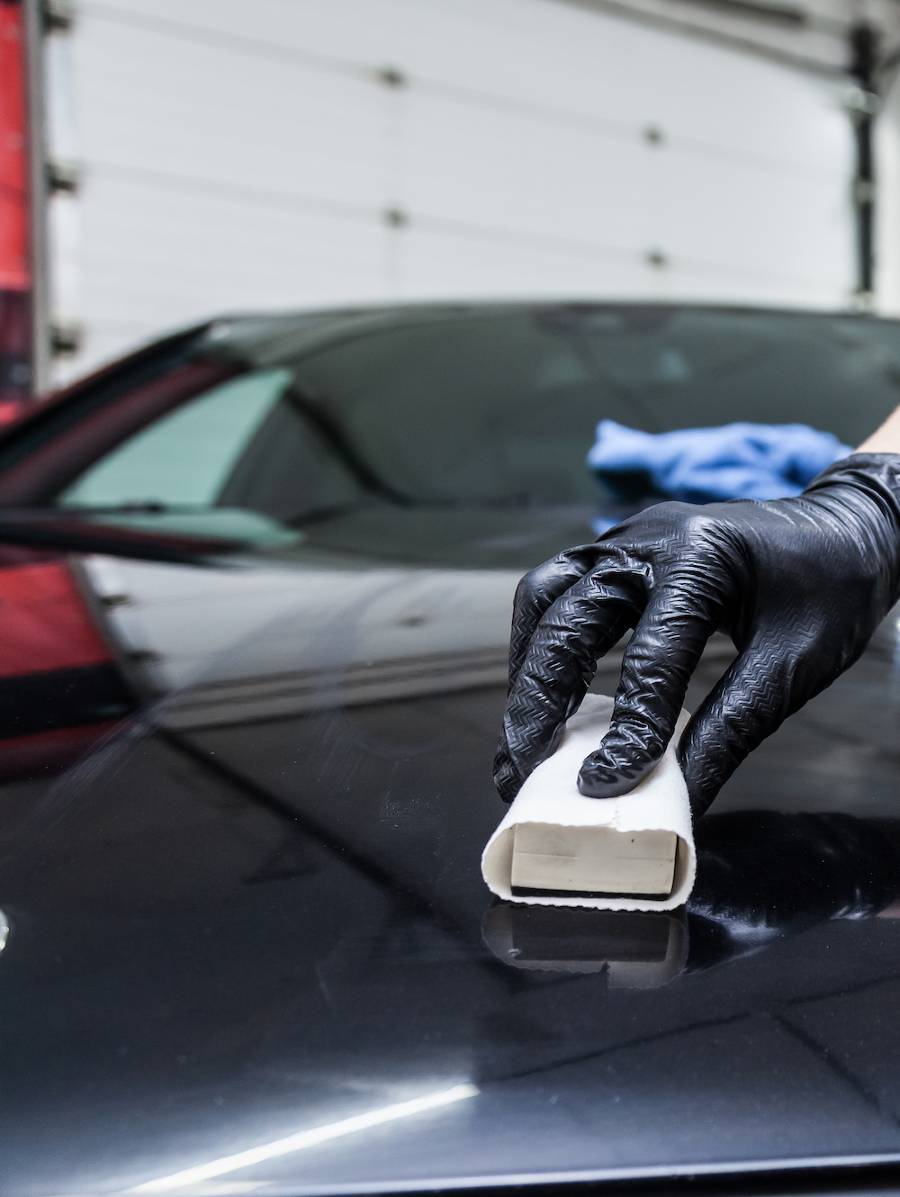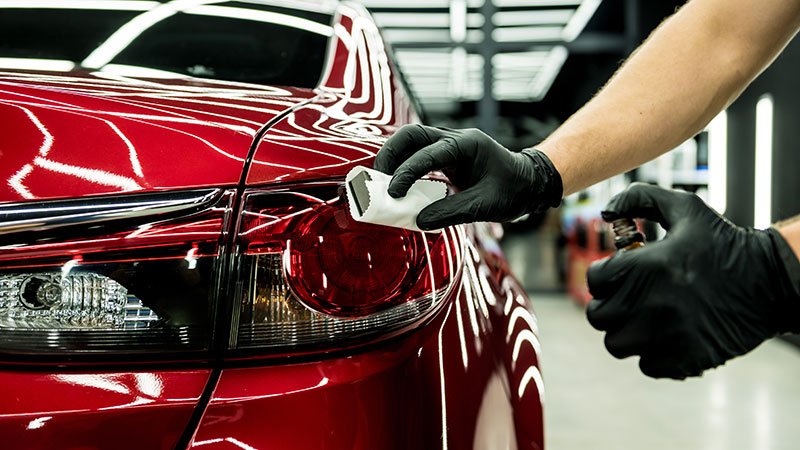Why Ceramic Finishing Is the Ultimate Solution for a Remarkable Finish
Ceramic covering has actually arised as a leading solution for those looking for a perfect coating for their lorries, thanks to its exceptional durability and safety functions. What aspects genuinely established ceramic coating apart?
What Is Ceramic Layer?

When used appropriately, ceramic covering creates a hydrophobic surface area that drives away water and dust, making it less complicated to keep and clean. Unlike standard waxes or sealers, which typically offer short-lived security, ceramic layers can last for numerous years, depending on the item high quality and application method. The process of using ceramic finish calls for precise prep work, including detailed cleansing and often repaint adjustment, to make certain optimum bonding and efficiency.
Ceramic coverings are not limited to automotive surfaces; they can likewise be utilized on numerous materials, consisting of glass, metal, and plastics, providing a versatile solution for improving security. Generally, ceramic covering represents a considerable development in surface area protection modern technology, incorporating both practical and visual advantages for a large range of applications.
Advantages of Ceramic Coating
While several surface defense choices exist, the benefits of ceramic layer attract attention due to its special residential properties and long-lasting performance. Among the main benefits is its remarkable toughness. Ceramic Coating Philadelphia. Unlike typical wax or sealants that require constant reapplication, ceramic layers provide a resistant layer that can last for several years, dramatically lowering upkeep initiatives
Another significant advantage is enhanced security against environmental pollutants. Ceramic coatings create a hydrophobic surface area that wards off water, dirt, and numerous pollutants, making it less complicated to cleanse. This attribute not just preserves the lorry's look however additionally lessens the danger of deterioration and oxidation, specifically in harsh climate condition.
In addition, ceramic finishes provide remarkable resistance to UV rays, stopping fading and degradation of paint in time. This UV protection is important for keeping the visual value of surface areas and vehicles exposed to route sunshine.
Furthermore, the glossy coating attained with ceramic covering boosts the overall aesthetic charm, offering surfaces a showroom-quality sparkle. In general, ceramic finishes represent a considerable innovation in surface area protection technology, supplying long-lasting benefits that cater to both visual and useful needs.
Just How It Works
Comprehending the scientific research behind ceramic layers discloses just how they offer such remarkable security and long life. At its core, a ceramic coating is a liquid polymer that chemically bonds with the car's manufacturing facility paint. This bonding develops a protective layer that is both hydrophobic and oleophobic, repelling water, dust, and oil. The key component of a lot of ceramic coverings is silicon dioxide (SiO2), which is stemmed from quartz. This substance contributes to the coating's solidity and resistance to scratches, UV rays, and environmental impurities.
The application procedure involves multiple steps, including surface area preparation, which is important to achieving ideal attachment. As soon as applied, the finishing undergoes a treating process, during which it sets and forms a semi-permanent bond with the paint surface area. This bond is what differentiates ceramic coatings from standard waxes and sealers, offering a longer-lasting protective barrier that can withstand for several years.
In addition, the density of the covering can boost its safety qualities, making sure that it can withstand harsh problems. Eventually, the science of ceramic coverings integrates advanced materials with cutting-edge application strategies to supply an unparalleled degree of security and visual improvement for vehicles.
Contrast With Conventional Methods
When contrasted to typical paint security approaches such as waxes and sealers,The advantages of ceramic coatings become specifically obvious. While waxes use a temporary luster, commonly lasting a couple of weeks to a number of months, ceramic layers offer a long-lasting safety layer that can sustain for a number of years. This durability More Info substantially decreases the frequency of reapplication, making ceramic finishings a much more cost-efficient service in time.
Additionally, traditional approaches often require substantial prep work and multiple applications to achieve an adequate degree of security. On the other hand, ceramic finishings bond at a molecular degree with the vehicle's surface area, producing a durable shield versus environmental pollutants like UV rays, acid rainfall, and road salts. This bond improves the car's resistance to scrapes and swirl marks, which are widespread with conventional waxes and sealants.
Additionally, the hydrophobic properties of ceramic coverings drive away water and dust, causing simpler cleansing and upkeep. On the other hand, wax click here for more info and sealant-treated surfaces can bring in grime, requiring more frequent washing - Ceramic Coating Philadelphia. On the whole, ceramic layers not just supply premium protection yet likewise supply an extra aesthetically attractive and enduring coating, establishing them as the preferred selection for critical automobile proprietors
Application and Maintenance Tips

Making use of a foam applicator, use the coating in little areas, adhering to the maker's standards pertaining to density and overlap. Allow sufficient treating time between coats, generally 24-hour, to guarantee appropriate bonding. After application, it is critical to stay clear of direct exposure to water or severe components for at least a week to allow the finishing to fully treat.
For maintenance, wash the car consistently with pH-balanced soaps and stay clear of abrasive materials. Touchless vehicle cleans are recommended to lessen scraping. Additionally, using a ceramic maintenance spray can boost the finish's hydrophobic properties and durability. Regular inspections for any indicators of wear will help maintain the finishing's honesty and preserve that pristine finish.
Verdict
In conclusion, ceramic covering arises as a premium choice for accomplishing a perfect automotive surface. By forming a durable bond with manufacturing facility paint, ceramic finishing efficiently guards against scratches, UV rays, and ecological impurities.
